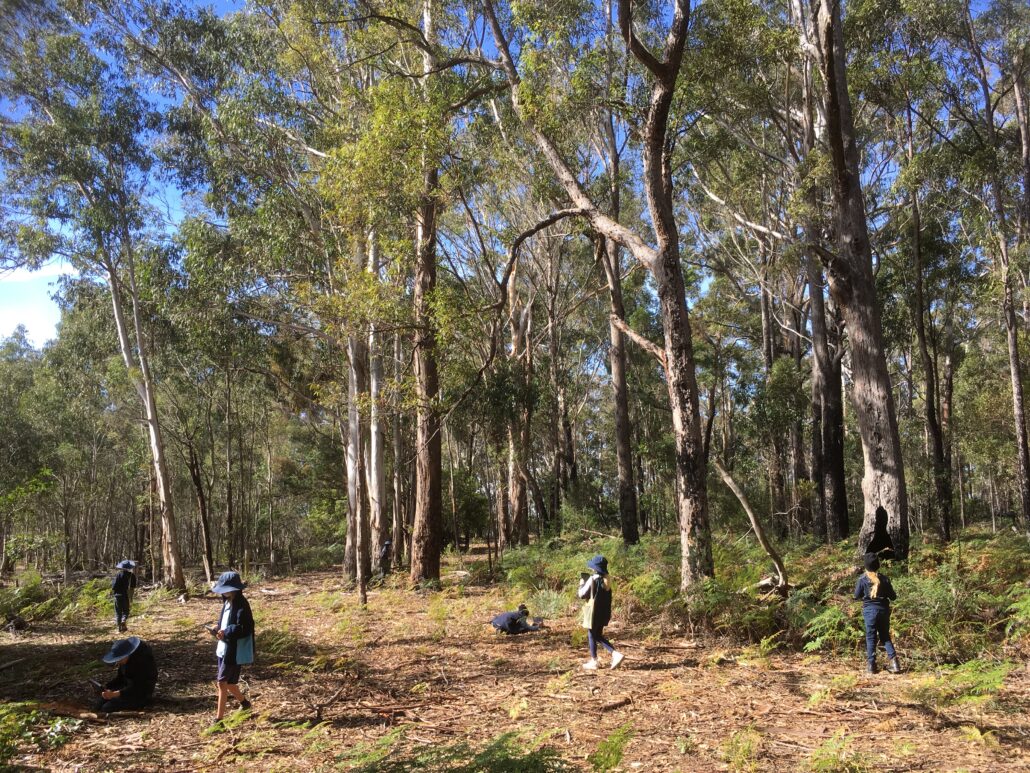Stage 1 – Geography – Features of Places

Program Overview
The students investigate the natural and human features of Bournda National Park. They learn about who uses the park and who takes care of the park. Taking on the role of one of the park users the students need to find and discuss some of the park features. The students then create a map using photographs of the places they have found.
Key Questions
- What are the features of, and activities in, places?
- How can we care for places?
Learning Experiences
Natural and human features of place
Students use a simple map to explore the camping area of the National Park from the Shelter Shed, through the day picnic area and to the edge of the Wallagoot Lake. During this walk students look at the facilities that have been provided and discuss how these facilities can help to care for the National Park. Students have photographs of the facilities to find and mark off on a check sheet.
Students take on the role of different park users (fishers, birdwatchers, bushwalkers etc) for the walk and then observe and discuss what has been provided for each of the different users.
Once the walk has been completed the students work together to create one large map of the area they have explored using photographs of the facilities and model plants and animals.
Weather and seasons
Students go on a bushwalk which focuses on the natural features of the park. On this walk students identify things that change; daily, monthly, and seasonally. Students make observations and discuss changes that occur at a number of sites.
Weather data is collected, such as temperature and rainfall, and recorded. Students can make predictions about the temperature at night, or in other seasons of the year.
Environmental games
Environmental games are fun, sensory based activities that students can play at the end of the day. BEEC has a selection of these games that can be chosen to suit your needs.
Preparing for an Excursion
Post-visit information
Syllabus Outcomes
Geography K-6
- GE1-1 describes features of places and the connections people have with places
- GE1-2 identifies ways in which people interact with and care for places
- GE1-3 communicates geographical information and uses geographical tools for inquiry
Geography Content
Features of places
Students: investigate features of places and how they can be cared for, for example: (ACHGK005)
- description of the natural and human features of places
- consideration of how a place can be cared for
Weather and seasons
Students: investigate the weather and seasons of places, for example: (ACHGK006)
- description of the daily and seasonal weather patterns of a familiar place
- comparison of the daily and seasonal weather patterns of places
- discussion of how weather can affect places and activities eg leisure, farming
Geographical tools
Students will:
- create a map using pictures of the features they have located in the park
- observe, collect and record data
- collect weather data
Differentiation adjustments for High Potential and Gifted students
Choice – Students can choose to join in the class creation of the map or have a go sketching their own to demonstrate evidence of learning.
Challenge – What are the different park users? Do they have different needs? Can all their needs be met? Should all their needs be met?
